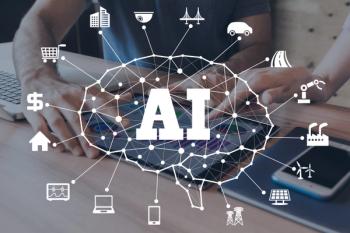
Technology Update
Technology Update column for Drug Topics issue of Aug. 9, 2004.
TECHNOLOGY UPDATE
X12 Pharmacy Advisory Panel changes name
Formed in 2002 to advocate for and improve electronic billing for pharmacists' professional services, the X12 Pharmacy Advisory Panel has changed its name to the Pharmacist Services Technical Advisory Coalition. Made up of seven pharmacy associations, the coalition has developed a master inventory of billing codes, built consensus on new codes, and supported an industry standard to expedite HIPAA-compliant electronic data interchange. The coalition also represents pharmacy's interests on the American Medical Association committee maintaining the CPT code set for documenting and billing professional services.
In black and white
The little black-and-white zebra stripe that changed the face of commerce has turned 30. Although Joseph Woodland patented the bar code and scanner in 1952, the Uniform Product Code didn't get rolling until the grocery industry saw the potential of an automated system for tracking merchandise from manufacturer to consumer. On June 26, 1974, a pack of Wrigley's chewing gum was the first item scanned with a UPC bar code at a Marsh Supermarket in Troy, Ohio. From that humble debut, the UPC has grown to 10 billion scans daily around the world. But come New Year's Day, the 12-digit American UPC gives way to its 13-digit European cousin. In case you were wondering, that pack of chewing gum is now in the Smithsonian Institution.
Distance learning
Pharmacists can now access NCPA's home study certificate programs for diabetes and cardiovascular care via the Web at
PC inoculation
It ain't exactly a free lunch, but CyberScrub is offering five years of computer antivirus protection for a one-year price. The CyberScrub AntiVirus Lifetime Edition is priced at $49.95 for an on-line download or $10 more for a download and a backup CD and guide. There is no annual renewal fee. The software, which includes a firewall, protects against computer viruses, worms, and Trojans. There's more information on the Web at
Take your medicine
Some pharmacies are carrying the MD.2, a high-end, fully integrated medication reminder system for high-risk patients who have trouble complying with their regimens. Priced at a retail price of $899, the automated dispenser is programmed to signal the patient through voice and text messages and a flashing light when it's time to take medications. To dispense the medication, the patient presses a large red button. After more than 1.58 million dispensing transactions, the MD.2 has a 98.6% compliance rate, according to its manufacturer, Interactive Medical Development, Webster City, Iowa. For $30 a month, patients can also purchase a monitoring service that contacts a caregiver when doses are missed. For more information, go to
Eye spy
Tennessee Tech researchers and TechWerks have teamed to develop a robotic eye to scan pill bottles for the Veterans Affairs mail-order pharmacy in Murfreesboro, Tenn. The VeriEye system uses a camera to look into the bottles, a scale to weigh the contents, and computer to figure out whether they're the right pills and the correct amount. The goal is to reduce stress and eyestrain for pharmacists who have had to verify every one of the up to 77,000 scripts processed at the VA pharmacy each day. Costing $350,000 to develop, the system augments bar codes and microchips that emit radio frequencies to ensure accuracy.
Carol Ukens :-)
Senior Editor
cukens@advanstar.com
Carol Ukens. Technology Update. Drug Topics Aug. 9, 2004;148:38.
Newsletter
Pharmacy practice is always changing. Stay ahead of the curve with the Drug Topics newsletter and get the latest drug information, industry trends, and patient care tips.











































































































































































































